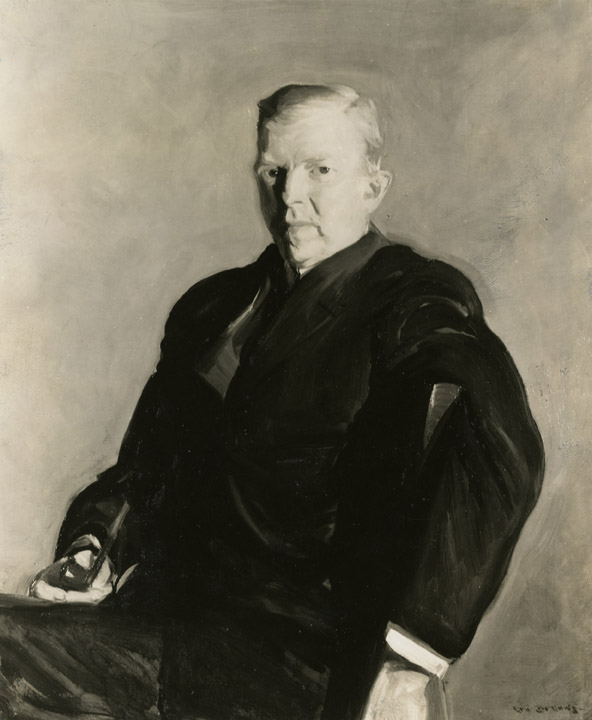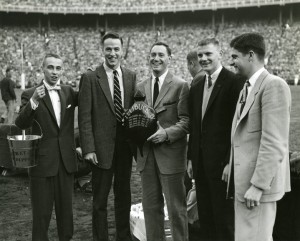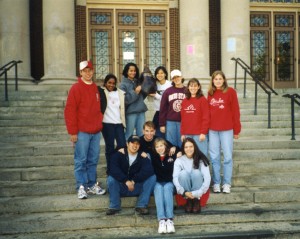They say you should write what you know. Joseph Russell Taylor wrote and drew what he felt and remembered. Nearly 50 years at Ohio State left Taylor with an abundance of memories of campus life, activities, and traditions to fill his writings, which are crammed full of memories and emotions. His art, which favored watercolor scenes of local landscapes, is on display at the Faculty Club.
An English professor and art instructor, Taylor graduated from Ohio State in 1888 and immediately became an assistant of drawing. With the exception of one year of graduate work at Columbia University, he would remain at Ohio State until his death. He moved from drawing to rhetoric, then to English literature, eventually becoming professor of English in 1908, a position he would hold until his death on March 30, 1933.
Taylor left an indelible impression on both the students and faculty of Ohio State University. One of his students when he was an art instructor was George Bellows; OSU alumnus James Thurber named Taylor one of his three most important teachers. In fact, Thurber was one of three people to speak at a commemorative program in 1933 for Taylor at the Faculty Club (then located on the third floor of Bricker Hall.) Also speaking were OSU Pres. George Rightmire and OSU English Prof. Billy Graves. After Taylor’s death, the art shown at the commemorative program was given to his family. They were returned to the Faculty Club after the recent death of Taylor’s granddaughter.
Others noted Taylor’s close connection with nature, his enthusiasm, and the value he put on student opinions and perceptions. Most of all, they noted his love for, as Thurber described it, “a more graceful way of living, a finer care for the quieter glows and gleamings in life”. Taylor’s own words, however, provide the best summation of his views on life. Thurber once described how Taylor told his students that “we are not here to teach you how to make a living, but how to live.”
The exhibit of his artwork is on display Nov. 1 – Dec. 14, 2012. A reception and presentation about the artist will be held this Friday from 6-8 p.m. For more information go to the Faculty Club’s web site:











Recent Comments